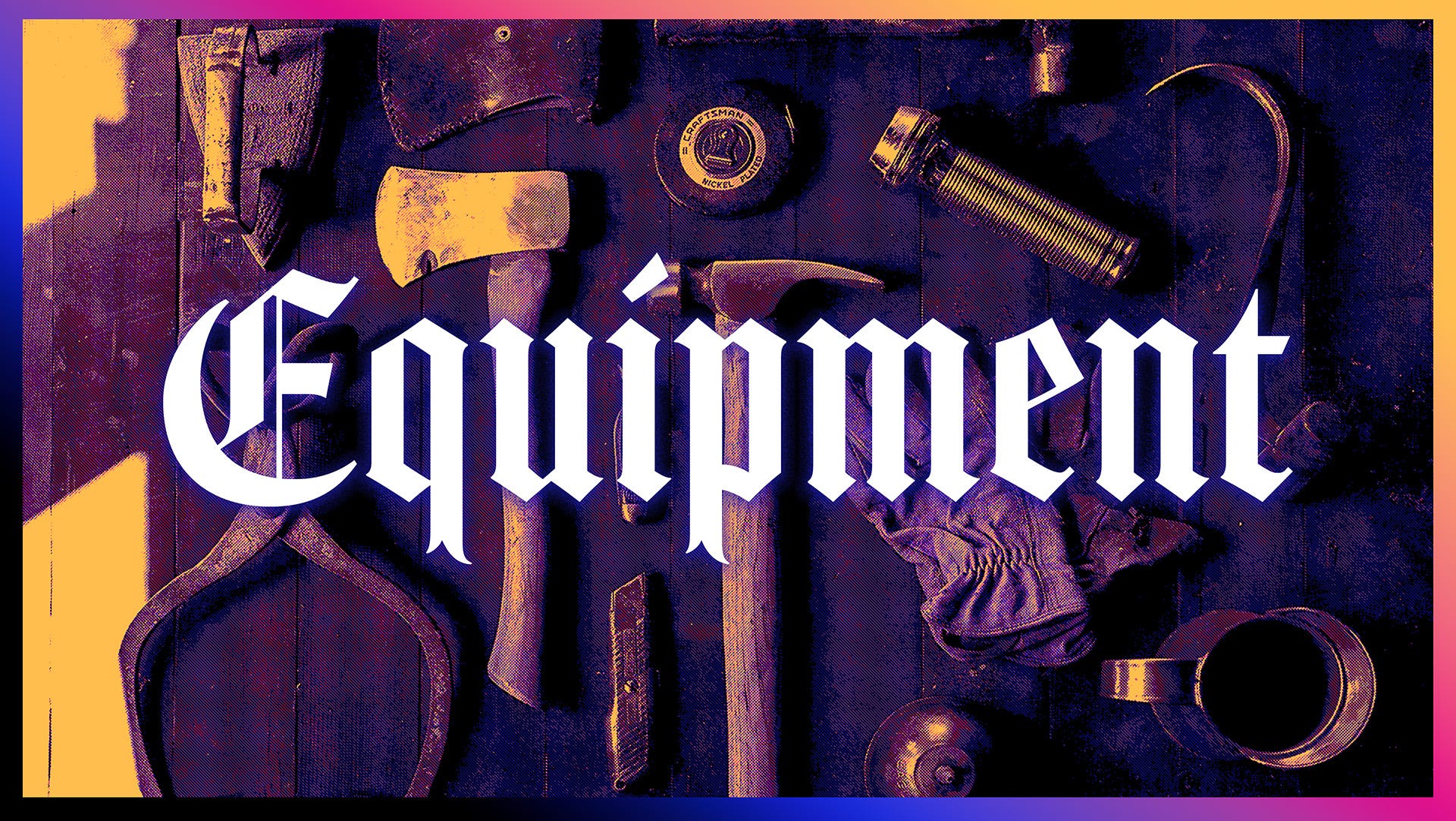See, kids? Now THAT’S a hook.
Speaking of hooks, Mr. Colville says it best regarding equipment lists in DND (specifically 5E):
“What is this list… doing here? There’s over 100 items on this list! How many have you ever used!?”
Now, OSR games (like OSE and Cairn and the like) can answer this question quite differently than folks in the 5E space that Matt’s talking to.
“Haw haw haw,” you smirk as you settle deep in your leather chair, lighting your pipe, “I’ve used the list many-a-moon and it’s imperative to the game! Only amateurs and idiots wouldn’t know that!”
Well, I may be an idiot, but I’m certainly no amateur. I can say with certainty that the equipment list in my games is vital in exactly two scenarios: character creation and when a character is about to die, as they frantically flip through pages for a way out.
That said, though, I think a lot of folks miss the fact that in these older, more dungeon-crawling-focused games, equipment is the game. It’s the meat and potatoes of the dish — necessary and hearty to get the game flowing.
And I’m not just talking about how it will save your hide; it’s what makes your character a person.
Let’s back up a bit and explain.
But first, want to offer suggestions on article topics? Have a burning question you need some thoughts on? Or do you just wanna be one of the fantastic supporters of the Grinning Rat Newsletter?
Equipment as Skills
When you start your character’s journey, after determining ability scores, they have a few things to decide at the beginning: their starting equipment (or if you’re some weirdo, just gold).
It’s easy to overlook this step. It doesn’t feel as intuitively potent as ability score generation or, weirdly enough, even alignment.
But what you’re effectively doing (especially in old-school games) by choosing equipment is selecting your skills.
For example, you pick a lantern instead of torches: you just chose toggleable night vision.
Or you grab a grappling hook and rope, allowing you to climb sheer walls or “cast” a controlled feather fall.
Each piece of equipment expands your repertoire. Multiplied by everyone in the party and/or hirelings, you’ve got a dungeon-crawling force that feels unstoppable.
A Note to GMs on Equipment as Skills
It’s important to recognize when groups are getting a little out of hand with their equipment, but I find this situation is more rare than not so unless its fundamentally breaking the game, let it slide.
Remember that when the GM tells the players not to do something or that something isn’t efficient or effective, the players will take that information and apply it AND THEN SOME. Expect them to never care about that stuff again or for them to completely avoid anything to do with equipment so they can not risk making you upset or annoyed.
Not every table is like this, but mine certainly is. So unless you find the game ungovernable due to excessive equipment handling or constant start-stopping, celebrate the fact you’ve got players who actually give a shit.
Equipment as Solutions
Equipment also does more than what it’s described to do. Unfortunately, many players stop at what’s listed in the book and never consider the nearly endless opportunities.
Don’t believe me? Look at the humble Sack (Small) for inspiration on how to be truly creative with your equipment.
A sack is, of course, storage for things like coins, ammunition, and so on. But it’s also more than that, and for many different scenarios:
Can hold glass dust, sand, or other material for detecting invisibility, illusions, or traps
Can be weighted and tossed to activate a pressure plate or trap
Wrap and cushion fragile items from breaking
Block a pipe to prevent gas or poison leaks
Fill with mud and shove into a keyhole to harden and block
Fill with copper pieces to use as a decoy coin pouch
Ground up some charcoal and pour dirty or stagnant water through for rough filtration
Tie to an arrowhead filled with explosive or flammable powder for a makeshift weapon
Swing as an improvised weapon when filled with rocks
When you start to think of everything it can do, a simple sack becomes a Swiss Army Knife in games that reward improvisation and clever thinking.
A Note to GMs on Equipment as Solutions
Players will not intuitively think of these sorts of things, so the best way is to show them rather than tell them:
Have the characters find NPCs or fallen foes with items used in creative ways
Have the shopkeep ask if they want the waterproof-lined sack or the burlap sack
Throw random environmental or item-specific situations in the dungeon that would otherwise be mundane (a huge puddle of mud, an old extinguished campfire with chunks of charcoal remaining, or an extraordinarily rare and expensive treasure that is unbelievably fragile).
It isn’t only on the players to think of items this way — it’s on you to show them the way!
Equipment as Story
Selecting equipment at the beginning of character creation, or even going out and buying more, implies that your character believes the world they are entering cares about those things.
It also allows you, as the GM, a pretty seamless way of introducing new situations into the game:
Does the rogue feel they must buy a hand mirror to look around corners? Think about introducing a monster with a gaze attack or a vampire who won’t have a reflection.
Does a cleric bring holy water in case of undead? Throw in a profane altar or fountain somewhere in the dungeon that can be purified with the water.
Does the fighter bring a crowbar, expecting to lift heavy doors? Put in a broken lever with a missing handle that looks roughly the same size as the crowbar.
Basically, shoot your monks. The party won’t be thinking you have this particular part of the dungeon to account for their equipment because, as we’ve stated, players rarely think about their equipment in the first place. When they have a sudden use for an item they’ve been hoarding for 10+ sessions, they’ll feel elated.
Equipment is Only Equipment Until It Isn’t
Like other articles I’ve written on experience points, themes, downtime, or hell, even DOORS, the difference between a roleplaying game and different types of games is the existence of tactical infinity.
The old line of “you can do anything you want” is true, but for that to be rewarding and worth the time investment, you need to add the line:
“You can do anything you want… if the world you inhabit cares about it.”
So, go now! Head into the dungeon looking like a pack mule, but do so with the knowledge that the dungeon is a multi-faceted puzzle, and while it might not appear so at first blush, you’ve got all the pieces you need.
Thanks for reading!

This article is brought to you by the following paid subscribers who make this newsletter possible:
Azzlegog
Colin
DSPaul
Michael Phillips
Mori
Space Pirate









